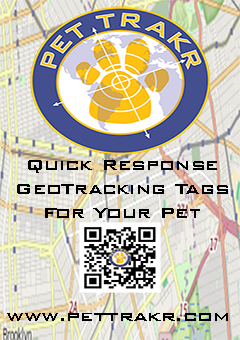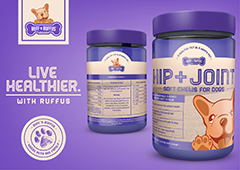FUR BABY, IT’S COLD OUTSIDE!
Protect Your Pet From Winter’s Environmental Hazards
By Steve Whitney
Winter is here. Are you ready for the special considerations colder weather brings in pet care? According to the Washington Post what began this past March as a sudden surge in demand in pet adoption, has become, as of November, a bona fide boom. Shelters, nonprofit rescues, private breeders, and pet stores—all reported more consumer demand than there were kittens and puppies to fill it. This recent exponential increase in pet ownership correlates to a need to educate the public in the field of basic winter weather pet care.
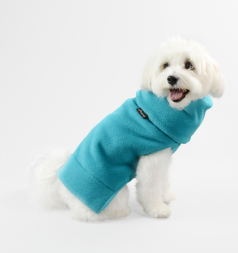
OUTDOOR LIFESTYLES
Our pet’s ancestors lived 100% of their lives outside. This might lead one to believe there is no reason to pay attention to the amount of time a dog can spend outdoors in the winter. However, each pet is an individual and needs to be cared for on an individual basis. Generally speaking outside activities are super safe above 45 degrees Fahrenheit. Once the temperature begins to dip down near 32 degrees, pet owners need to understand their risk of frostbite and hypothermia.
Any outside activities in temperatures lower than 10 degrees can be life-threatening and special attention should be taken. You should also take into account acclimation, meaning dogs that live in arctic conditions have become accustomed to the colder temperatures, as opposed to a dog who had minimal outdoor exposure in freezing temperatures. Wet conditions will sometimes in the right environment double or triple the chance of hypothermia. There are plenty of pet sweaters and jackets on the market that can help keep your pet warm but nonetheless keep an eye out for shivering and other signs of hypothermia. Chewy.com has a great assortment of coats including exceptionally functional Hurtta which originated in Finland. The water- and windproof Hurtta coats use a foil pattern to reflect the dog’s own body heat back to the dog making the jacket especially warm. For casual city strolls in cold weather vs. extended outdoor hikes, Ruffina makes double layer polar fleece coats (made in America) specifically tailored for a boy or a girl dog and best of all with matching accessories for humans.

HEAT SEEKERS
Pets will seek inside heat during the winter months. Pay particular attention to where they are nesting. Avoid space heaters, baseboard radiators, and fireplaces which all pose major threats. A good quality pet bed will help keep your dog or cat comfy and warm. Make sure it is placed in a safe draft free area. P.L.A.Y. makes top quality - environmentally safe for your pet - beds in a range of colors and sizes to work with any interior. Sit Stay Forever makes organic beds, their Double Velour Fleece Landing Pads cradle your pup in warmth and velvety softness in a range of colors suitable for country or city.
Heating our homes tends to dry out the air, which in turn will dry out your pet’s skin and fur. Although most pets may need an extra layer of protection in the winter, make sure it comes from their coat and not a layer of fat. Cold temperatures may even bring on lazy behavior and the need for fewer calories. Be attentive to your dog’s activity level and adjust their calories accordingly. A high quality preferably raw meat-based diet enriched with whole foods will help ensure a healthy coat and good energy for the cold winter months.
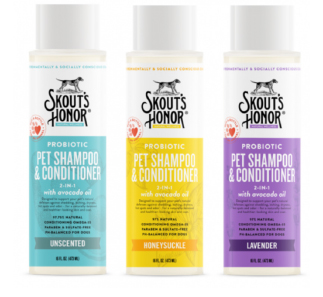
DRY MATTERS
Bathe your pets as little as possible during cold spells. Washing too often can remove essential oils and increase the chance of developing dry, flaky skin. Use a pet robe after bathing your pet to keep them from becoming chilled and protect your furniture and rugs. If your pooch must be bathed, ask your vet to recommend a moisturizing shampoo and/or rinse. We like the probiotics in Skout’s Honor shampoo + conditioner because they help defend against common skin problems that may pop up anytime the season’s change such as itching, odor, dryness, dandruff, hot spots, yeast and excessive shedding. Another cold-weather tip is to use a dry powder shampoo, we have an excellent one at Sit, Stay, Forever that is hypoallergenic and safely deodorizes, heals, and soothes.
Never leave your pet in the car, as the vehicle can act as a refrigerator keeping the cold air inside leading to hypothermia and even death. Many cats (and other small animals) will seek the warmth of a hot engine block. Always pound your car’s hood and beep the horn before starting your vehicle during cold weather.
SNOW AND ICE
Did you know that dogs will eat snow to induce vomiting similar to how they will eat grass in the summertime? Some pets will choose eat snow as a means of hydration over stale water sitting in their inside bowls. Excessive snow eating can also be a sign of kidney failure or other endocrine / hormonal diseases. Pay particular attention to this behavior as all types of dangerous chemicals can be found in the snow. One particular danger is auto antifreeze which can be spilled onto driveways, sidewalks and streets. Antifreeze is a lethal poison for dogs and cats. Be sure to thoroughly clean up any spills from your vehicle, and consider using products that contain propylene glycol rather than ethylene glycol.
Always be hyper-vigilant looking for any signs of discoloration or things hidden in the snow. Road and sidewalk salt can wreak havoc on paws, leaving them raw, dried out, and painful. While you can’t change the type of salts used by your local municipality, you can purchase pet safe salt for use in your own immediate home environment. Safe Paw Ice Melter is not harmful to your pet or your property or the planet.
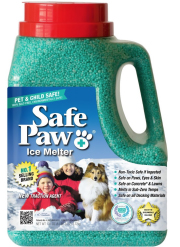
Winter grooming is essential for optimum pet health and paw care is a must. Brush their coat thoroughly to allow optimum insulation. If your pet has particularly furry feet trim the hairs between the pads. Clean any snowballs that may have formed on their coat, rinse or wipe your dog’s paws to remove any snow, ice, or salt as soon as they come inside.
There are many brands of paw salves, balms, and waxes. Musher’s Secret is the classic, all time favorite for dog owners but there are other brands like M. Barclay and Sit Stay Forever who make excellent, all natural paw protection. Use these products before and after winter activities. If your pet exhibits extreme discomfort when walking outside on frozen or salted surfaces, consider using dog booties, we love the functional yet fashionable looks from Fairy Boss which can bring instant protection and relief.
The winter season can bring loads of fun and good times for you and your pets, but it’s important to remember to stay safe. Never stay out in the cold longer than appropriate and keep a close eye on what your dog might find to eat in the snow. A good rule of thumb: “If it’s too cold for you, it’s too cold for your pet”. I can’t stress enough how important it is to not only take your dog to yearly veterinarian check-ups but to bring them in if anything seems out of the ordinary. Our pets are not as different from people as we may think, they need medical care just like us to stay healthy and safe!
Author’s note: Steve Whitney is a degreed environmentalist (MS, BS, OSU, Natural Resources) and a lifelong owner and trainer of horses, dogs, and cats. He is also the owner of Sit. Stay. Forever. Safety First Pet Products.








